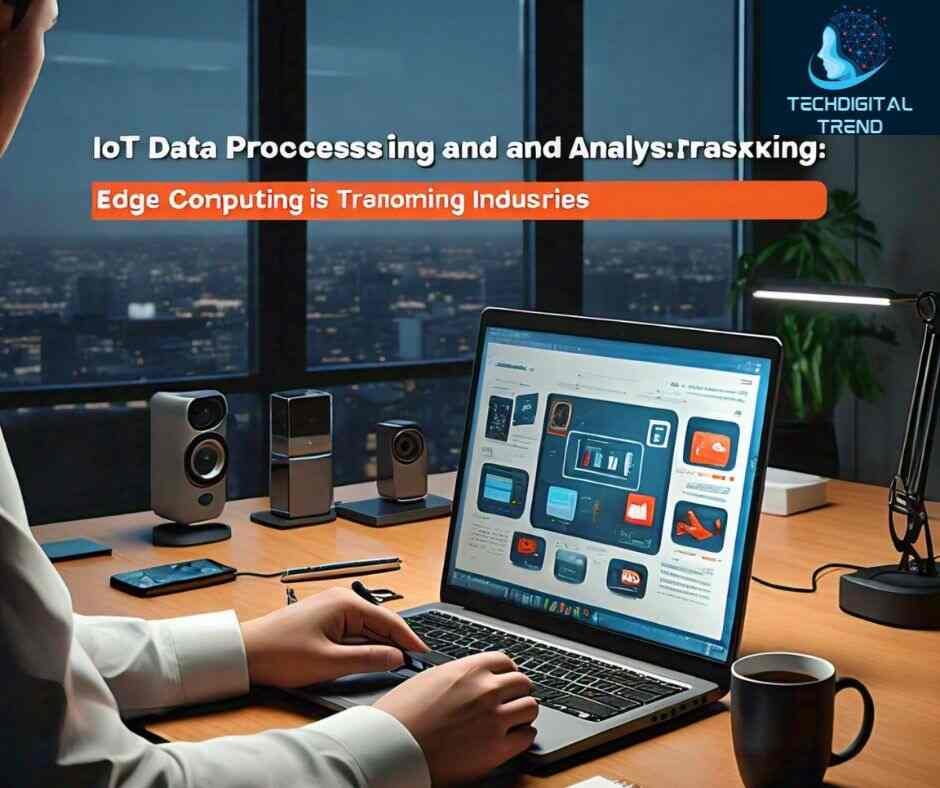Table of Contents
ToggleProcessing and Analysis
The Internet of Things (IoT) has transformed the way we live and work, generating vast amounts of data from connected devices. However, processing and analyzing this data in real-time has become a significant challenge. Edge computing has emerged as a solution to this problem, enabling data processing and analysis at the edge of the network. In this article, we will explore the applications, benefits, and challenges of edge computing in IoT and how it’s revolutionizing data processing and analysis.
Introduction to IoT and Edge Computing
IoT refers to the network of physical devices, vehicles, buildings, and other items embedded with sensors, software, and other technologies to connect and exchange data. Edge computing, on the other hand, refers to the processing and analysis of data at the edge of the network, closer to the source of the data.
Applications of Edge Computing in IoT
- Real-time Data Processing: Edge computing enables real-time data processing and analysis, reducing latency and improving decision-making.
- Predictive Maintenance: Edge computing can be used for predictive maintenance, detecting potential equipment failures and scheduling maintenance remotely.
- Quality Control: Edge computing can be used for quality control, detecting defects and anomalies in products in real-time.
- Supply Chain Management: Edge computing can be used for supply chain management, tracking inventory and shipments in real-time.
- Smart Cities: Edge computing can be used in smart cities to manage infrastructure, transportation, and public services.
- Industrial Automation: Edge computing can be used in industrial automation to optimize production processes and predict maintenance needs.
- Healthcare: Edge computing can be used in healthcare to analyze medical data and provide real-time insights for patient care.
- Retail: Edge computing can be used in retail to personalize customer experiences and optimize inventory management.
- Security: Edge computing can be used in security to detect and respond to threats in real-time.
- Environmental Monitoring: Edge computing can be used in environmental monitoring to track and predict air and water quality.
Benefits of Edge Computing for IoT
- Improved Efficiency: Edge computing improves efficiency by reducing latency and enabling real-time data processing and analysis.
- Enhanced Decision-Making: Edge computing enables enhanced decision-making by providing real-time insights and analytics.
- Increased Security: Edge computing increases security by reducing the risk of data breaches and cyber attacks.
- Cost Savings: Edge computing reduces costs by reducing the need for cloud storage and processing.
- Improved Customer Experience: Edge computing improves customer experience by enabling personalized and responsive services.
- Increased Competitiveness: Edge computing increases competitiveness by enabling businesses to innovate and differentiate themselves.
- Improved Data Management: Edge computing improves data management by reducing data latency and improving data quality.
- Increased Scalability: Edge computing increases scalability by enabling businesses to process large amounts of data in real-time.

Challenges of Edge Computing for IoT
- Security Risks: Edge computing poses security risks, such as data breaches and cyber attacks.
- Interoperability Issues: Edge computing devices may not be compatible with each other.
- Data Management: Edge computing generates large amounts of data, which can be challenging to manage and analyze.
- Scalability: Edge computing solutions may not be scalable, making it challenging to integrate with existing systems.
- Complexity: Edge computing can be complex to implement and manage, requiring specialized skills and expertise.
- Cost: Edge computing can be costly, requiring significant investment in hardware and software.
- Data Privacy: Edge computing raises data privacy concerns, as data is processing and analysis at the edge of the network.
- Regulatory Compliance: Edge computing must comply with regulatory requirements, such as data protection and privacy laws.
Edge Computing Architecture
Edge computing architecture consists of three layers:
- Device Layer: This layer consists of IoT devices that generate data.
- Edge Layer: This layer consists of edge devices that process and analyze data in real-time.
- Cloud Layer: This layer consists of cloud storage and processing resources that store and analyze data.
Edge Computing Use Cases
- Smart Homes: Edge computing can be used in smart homes to optimize energy consumption and improve security.
- Industrial Automation: Edge computing can be used in industrial automation to optimize production processes and predict maintenance needs.
- Smart Cities: Edge computing can be used in smart cities to manage infrastructure, transportation, and public services.
- Healthcare: Edge computing can be used in healthcare to analyze medical data and provide real-time insights for patient care.
- Retail: Edge computing can be used in retail to personalize customer experiences and optimize inventory management.
Edge Computing Benefits
- Improved Efficiency: Edge computing improves efficiency by reducing latency and enabling real-time data processing and analysis.
- Enhanced Decision-Making: Edge computing enables enhanced decision-making by providing real-time insights and analytics.
- Increased Security: Edge computing increases security by reducing the risk of data breaches and cyber attacks.
- Cost Savings: Edge computing reduces costs by reducing the need for cloud storage and processing.
- Improved Customer Experience: Edge computing improves customer experience by enabling personalized and responsive services.
Edge Computing Challenges
- Security Risks: Edge computing poses security risks, such as data breaches and cyber attacks.
- Interoperability Issues: Edge computing devices may not be compatible with each other.
- Data Management: Edge computing generates large amounts of data, which can be challenging to manage processing and analysis.
- Scalability: Edge computing solutions may not be scalable, making it challenging to integrate with existing systems.
- Complexity: Edge computing can be complex to implement and manage, requiring specialized skills and expertise.
Edge Computing Applications
- Artificial Intelligence: Edge computing can be used to optimize artificial intelligence applications, such as machine learning and deep learning.
- 5G Networks: Edge computing can be used to optimize 5G networks, enabling real-time data processing and analysis.
- Autonomous Vehicles: Edge computing can be used in autonomous vehicles to optimize navigation and safety.
- Smart Grids: Edge computing can be used in smart grids to optimize energy distribution and consumption.
- Industrial IoT: Edge computing can be used in industrial IoT to optimize production processes and analysis predict maintenance needs.
Conclusion
Edge computing is revolutionizing IoT data processing and analysis, enabling real-time insights and analytics. While there are challenges to consider, the benefits of edge computing make it an essential technology for IoT applications. By understanding the applications, benefits, and challenges of edge computing in IoT, we can unlock its full potential and transform industries.
Open this link: Tap to here














